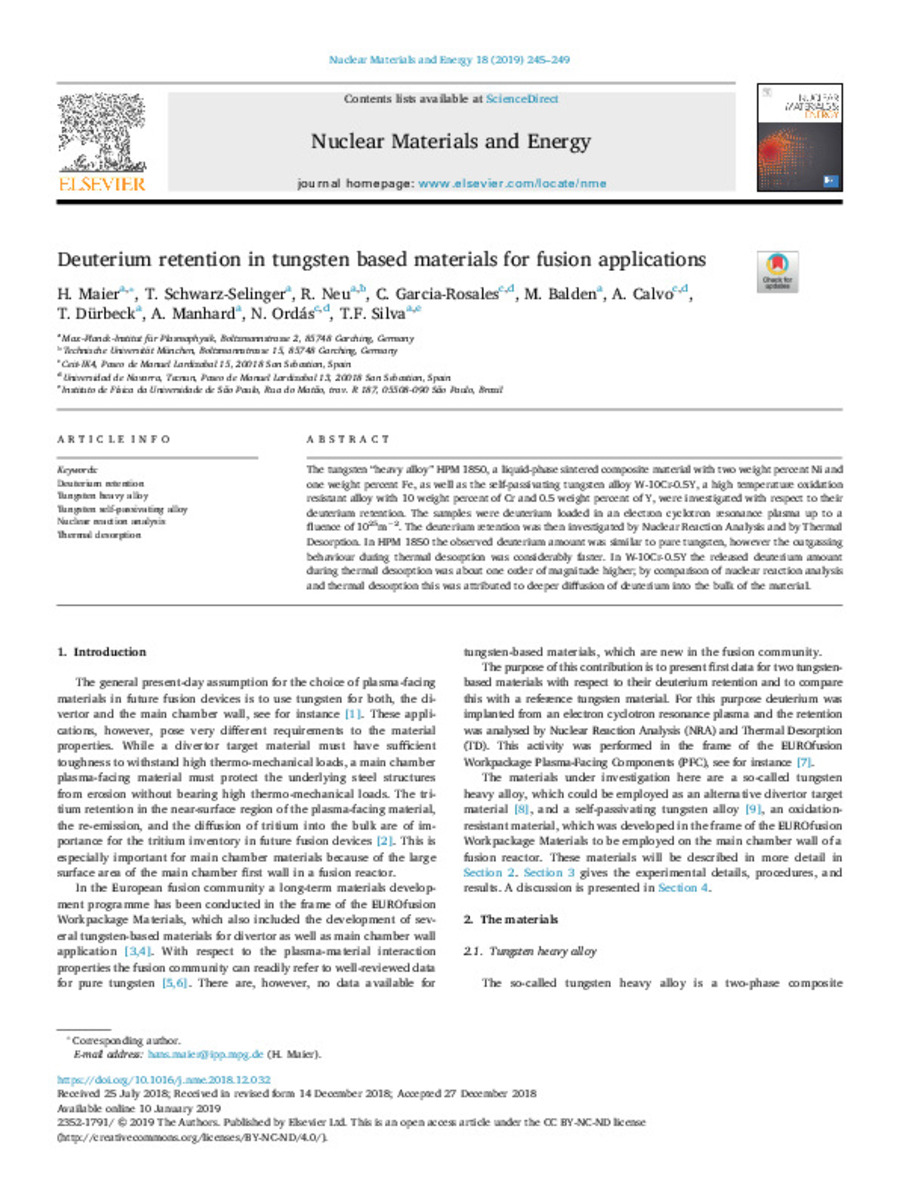Deuterium retention in tungsten based materials for fusion applications
Palabras clave :
Deuterium retention
Tungsten heavy alloy
Tungsten self-passivating alloy
Nuclear reaction analysis
Thermal desorption
Fecha de publicación :
2019
Nota:
Published by Elsevier Ltd. This is an open access article under the CC BY-NC-ND license
(http://creativecommons.org/licenses/BY-NC-ND/4.0/).
Cita:
Maier, H. (H.); Schwarz-Selinger, T. (T.); Neu, R. (R.); et al. "Deuterium retention in tungsten based materials for fusion applications". Nuclear Materials and Energy. 18 (2019), 2019, 245 - 249
Aparece en las colecciones:
Estadísticas e impacto
0 citas en

0 citas en

Los ítems de Dadun están protegidos por copyright, con todos los derechos reservados, a menos que se indique lo contrario.







